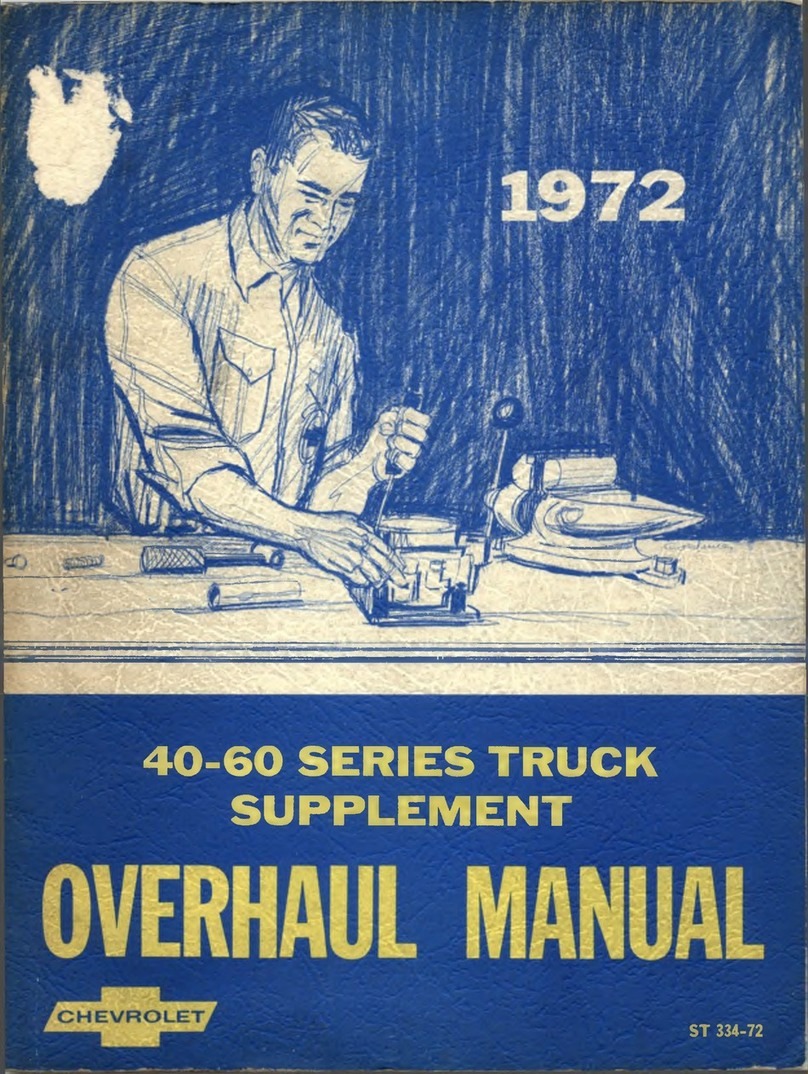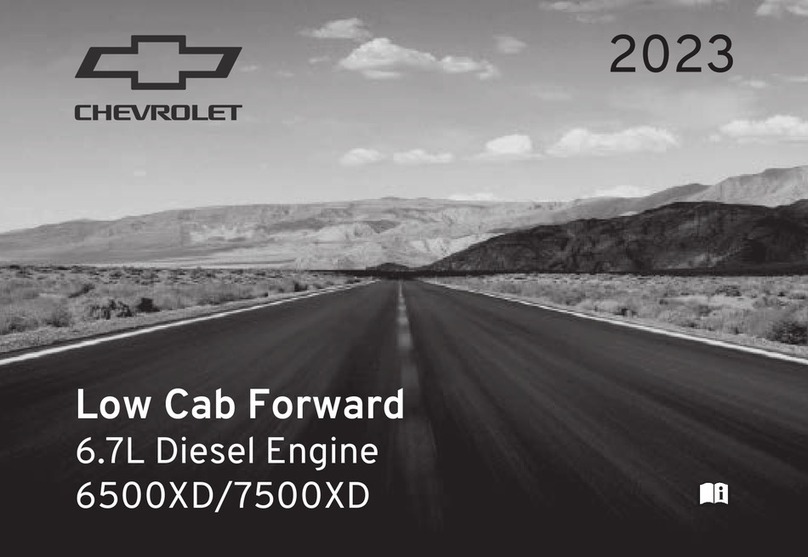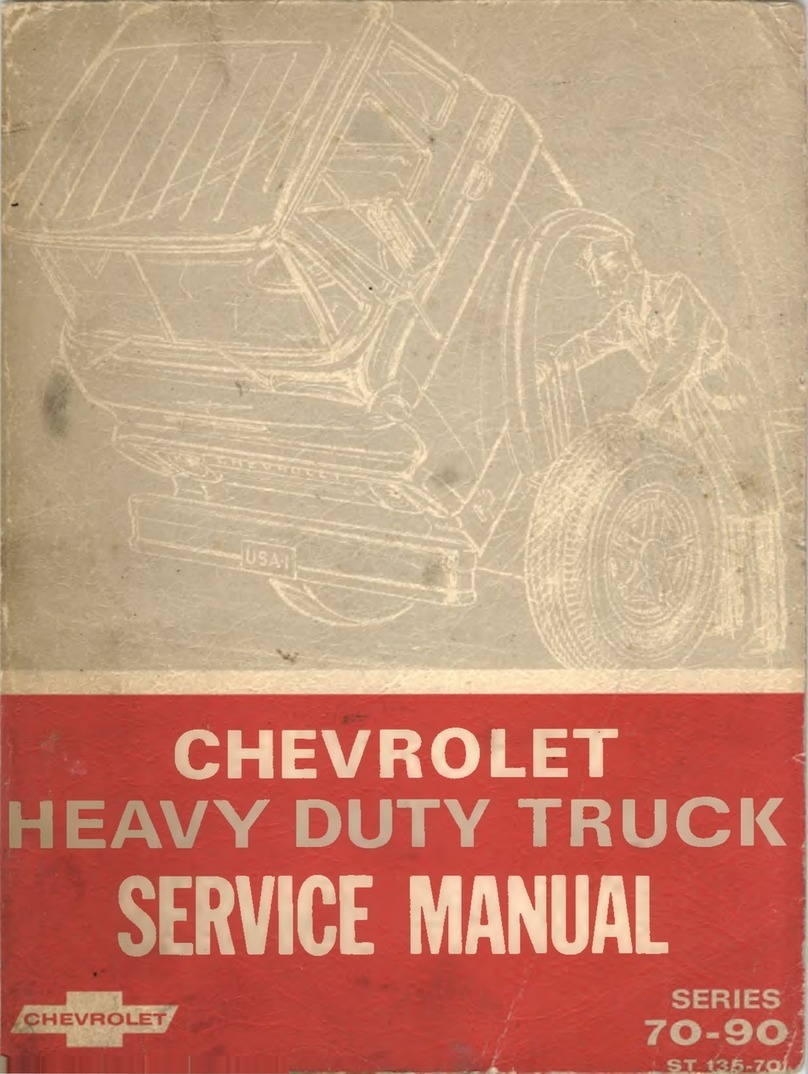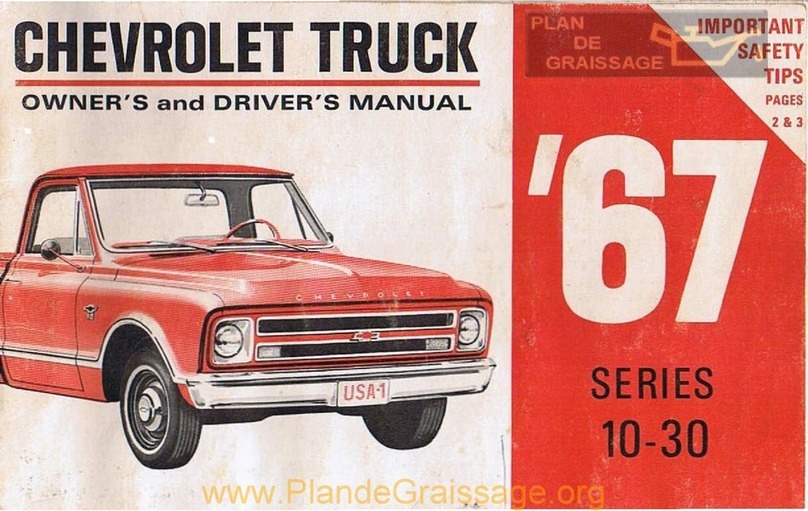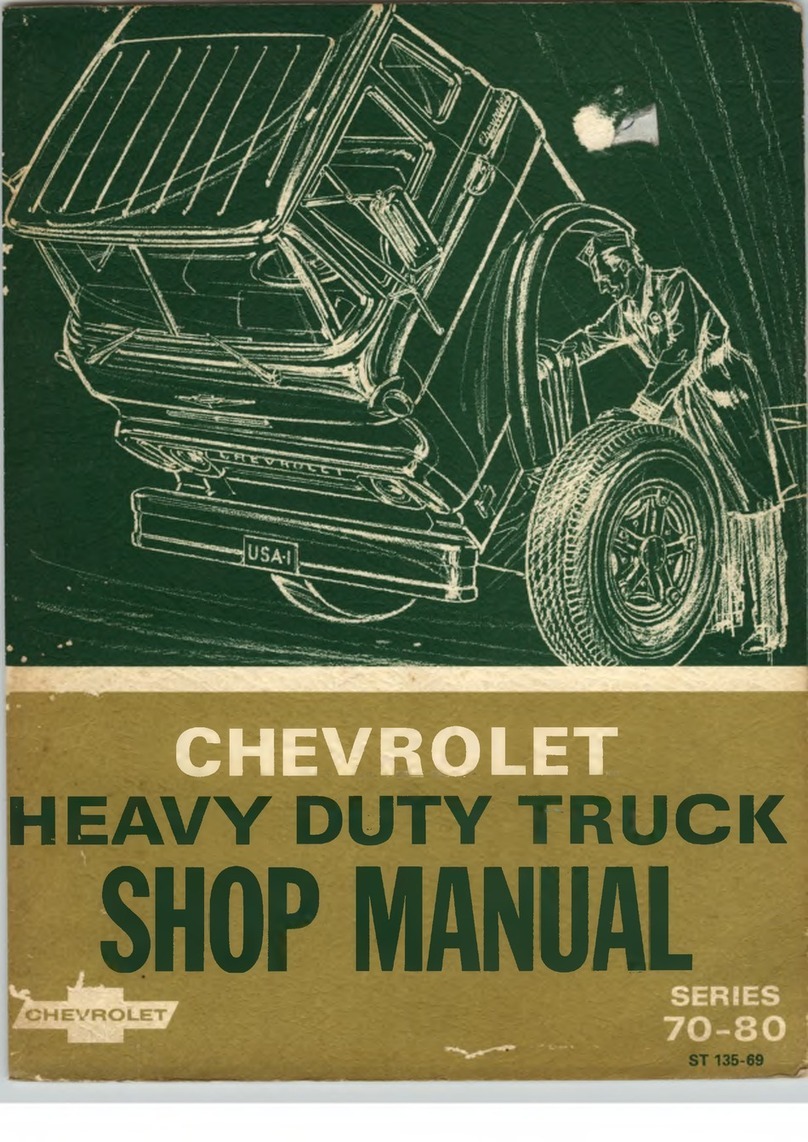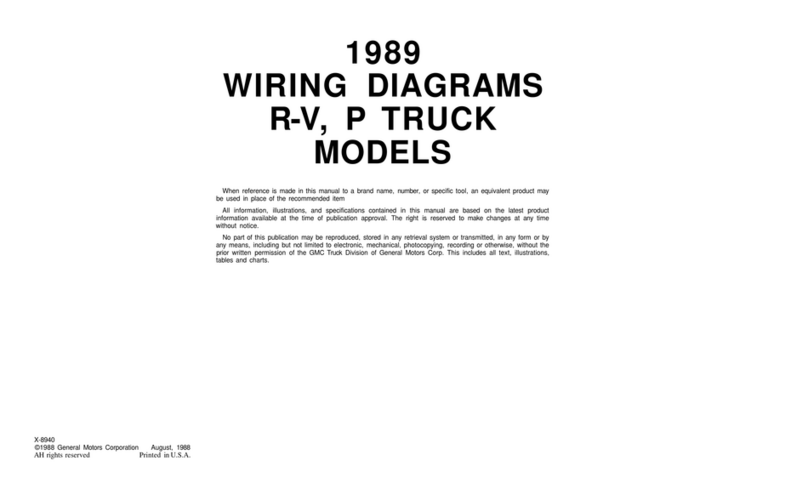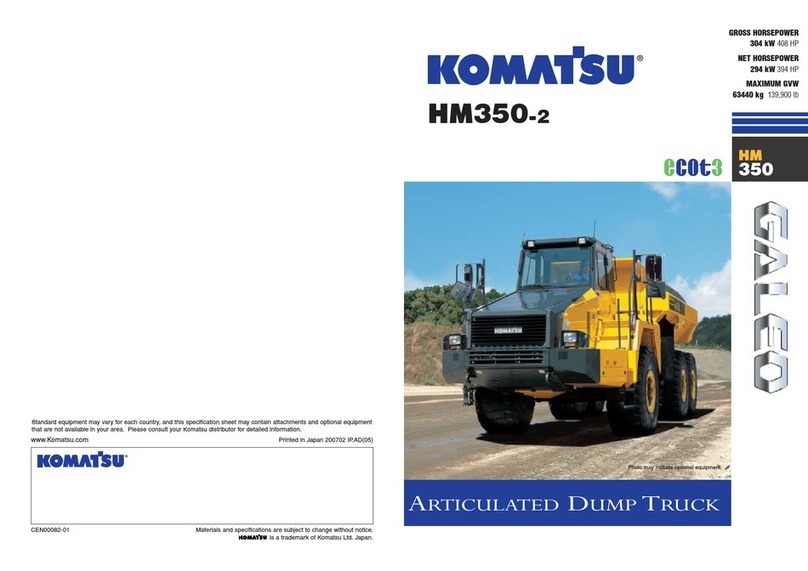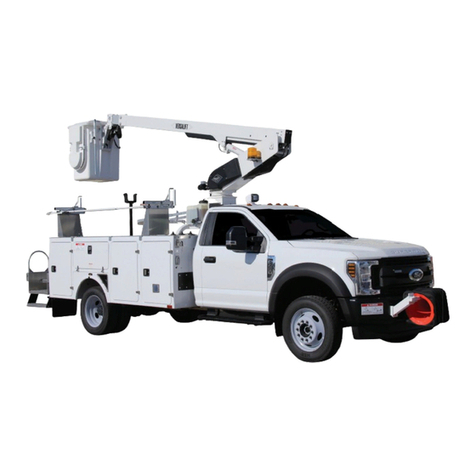
GENERAL INFORMATION 0-2
VEHICLE IDENTIFICATION NUMBER AND
RATING PLATE
A combination vehicle identification number and rating
plate used on all models (fig. 1) is located on the left
door hinge pillar of Conventional, Tilt Cab and Forward
Control models, on the upper left hand side of dash
panel on Cowl models and on the steering column of
Forward Control models. Also, included on the plate
is a space (DD) for indicating the date the truck was
delivered to the customer.
A typical vehicle identification number will decode
as follows:
CS140 800025 (See Series and Model Identification).
CS14 Series and model identification, without
second, third and fourth numbers.
0 Last number of model year 1970.
Assembly plant, = ontiac.
100025 Twenty fifth vehicle built at that plant.
Unit numbering starts at 100001 at all
plants.
ENGINE NUMBER
The engine number indicates manufacturing plant,
month and day of manufacture, and transmission type. A
typical engine number would be F1210FA, which would
breakdown thus:
F - Manufacturing lant (F-Flint, T-Tonawanda)
12 - Month of manufacture (December)
r\ CHEVROLET MOTOR DIVISION
^ GENERAL MOTORS CORPORATION o
WARRANTY MAY BE VOIDED IF WEIGHT
EXCEEDS ANY OF THE RATINGS SHOWN
GROSS VEHICLE WEIGHT INCLUDES WEIGHT OF
BASE TRUCK, ALL ADDED EQUIPMENT, DRIVER
AND PASSENGERS, AND ALL PROPERTY LOADED
INTO TRUCK.
PREFER TO OWNER’S MANUAL FOR EQUIP
MENT REQUIRED FOR INTERMEDIATE OR
MAXIMUM GVW RATINGS, AND FOR OTHER
LOADING INFORMATION, INCLUDING TIRE
INFLATION.
RATING IN POUNDS
AS M A N U - * MAXIMUM
FACTURED CAPABILITY
GROSS VEHICLE WEIGHT
FOR THIS VEHICLE
MAXIMUM FRONT END
WEIGHT AT GROUND
MAXIMUM REAR END
WEIGHT AT GROUND
VEHICLE IDENTIFICATION NO.
OO
Fig. 1—V ehi le Identifi atio n Number and Rating
Plate Information
10 - Day of manufacture (tenth)
FA - Transmission and engine type
UNIT AND SERIAL NUMBER LOCATIONS
For the convenience of service technicians and engi
neers when writing up certain business papers such as
Warranty Reports, roduct Information Reports, or re
porting product failures in any way, the location of the
various unit numbers have been indicated. These unit
numbers and their prefix or suffix are necessary on these
papers for various reasons - such as accounting, follow-
up on production, etc.
The prefixes on certain units identify the plant in
which the unit was manufactured and thereby permits
proper follow-up of the plant involved to get corrections
made when necessary.
Always include the prefix in the number.
Axles
• Rear Axle Serial Number Located at the Bottom
Flange of Carrier Housing.
• Rear Axle (Except Half Ton) Forward Upper Surface
of Carrier.
• 2-Speed Axle Serial Number on Face of C arrier.
Tandem A xle, Forw ard Unit— Unit and Assem bly
Numvers Stamped on Left Side of C arrier.
• Tandem Axle, Rear Unit—Unit and Assembly Num
bers Stamped on Upper ortion of Carrier.
Transmissions
• 3-Speed Transmission Unit Number Located on
Lower Left Side of Case Adjacent to Rear of Cover.
• 4-Speed Transmission Unit Number Stamped on
Rear of Case, Above Output.
• New rocess 5-Speed Unit Number Stamped on
Rear Face of Case to Left of Drain lug. Spicer
3000 Series above lug. Spicer 5000 Series on
Nameplate Left Side of Case at Rear.
• 5-Speed Clark Transmission Unit Number Stamped
on Left Rear of Case, Near .T.O. late.
• 4-Speed Auxiliary Transmission Unit Number on
Left Side of Case.
• Allison Transmission art Number and roduction
Date on Tag Left Side of Case.
• owerglide and Turbo Hydra-Matic 350 Transmis
sion Unit Number Located on Right Rear Vertical
Surface of Oil an.
• The Turbo Hydra-Matic Transmission 400 Serial
Number is Located on the Light Blue late on the
Right Side of the Transmission.
Engines
• 6-Cylinder Engine Unit Number Located on ad at
Right Hand Side of Cylinder Block at Rear of
Distributor.
• 8-Cylinder Engine Unit Number Located on ad at
Front, Right Hand Side of Cylinder Block.
• Diesel Engine (Four Cycle) Serial Number Forward
of Right Cylinder Head on Cylinder Block.
• Diesel Engine Serial Number 6-Cylinder Forward of
Right Cylinder Head, 3, 4-Cylinder Rear Right of
Cylinder Head.
Delcotrons
Delcotron Unit Serial Number--Top of Rear Housing.
CHEVROLET TRUCK SERVICE MANUAL








